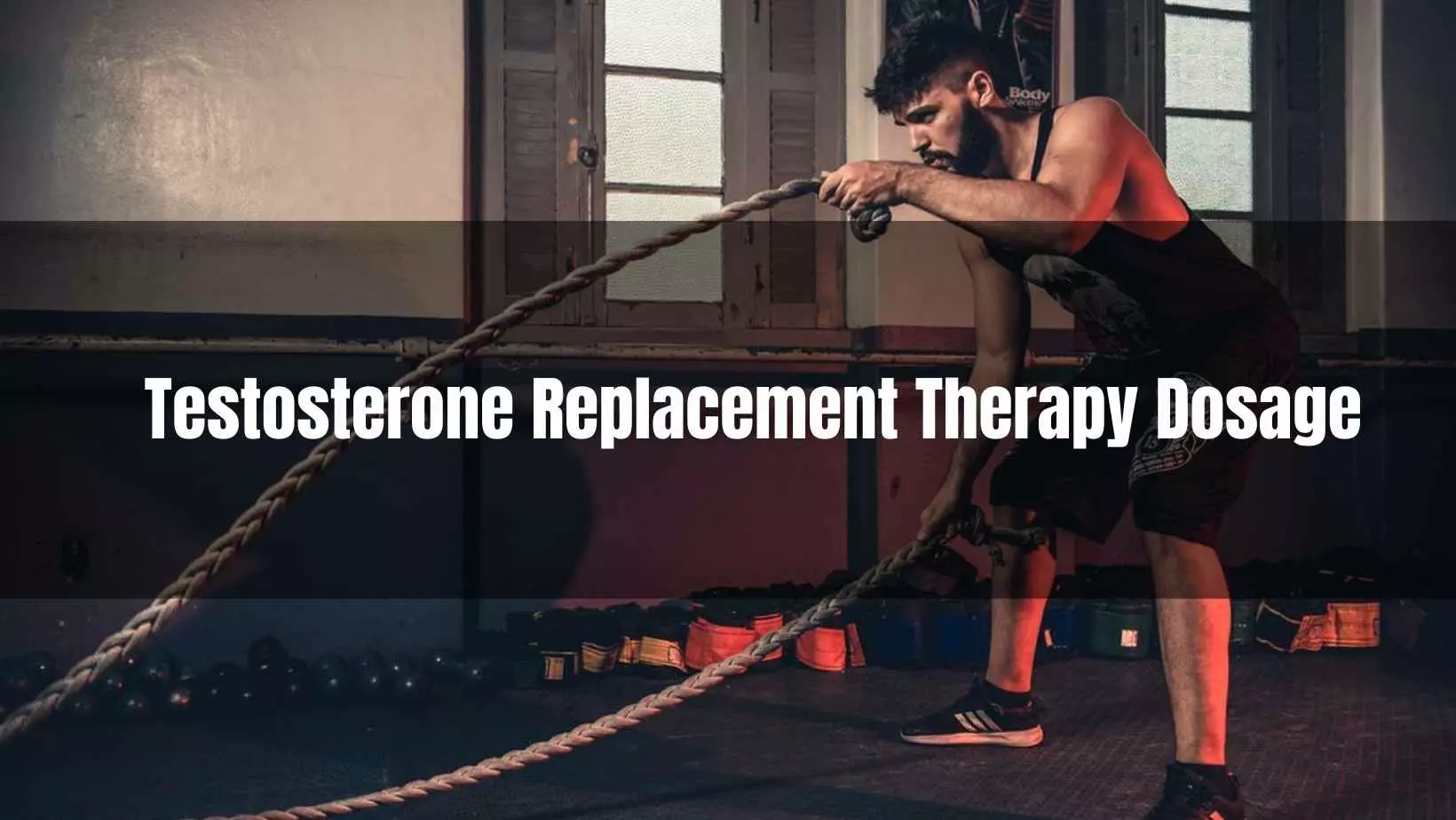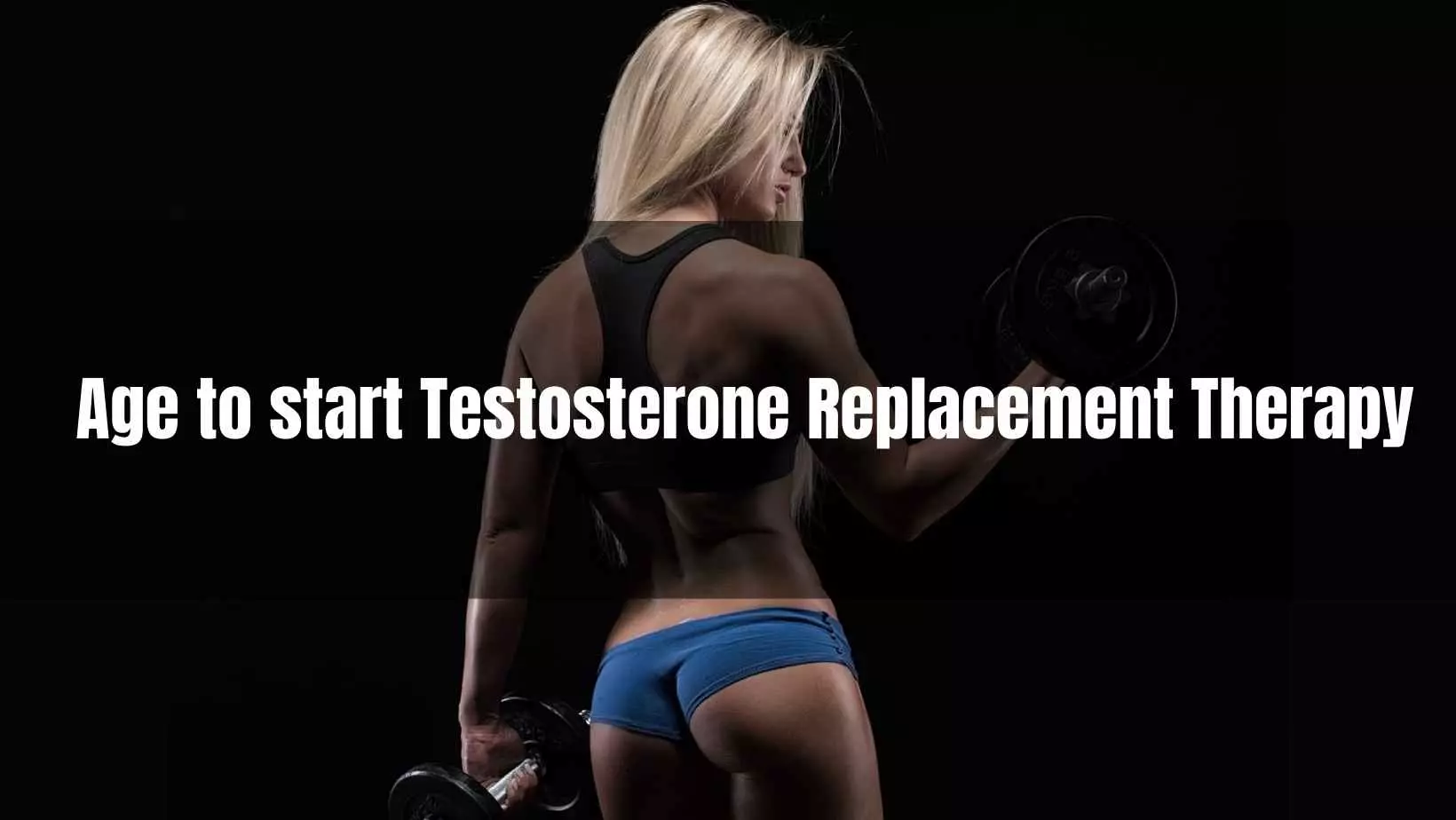When you first start researching TRT, you may become overwhelmed by the sheer volume of data, possibilities, debates, benefits and drawbacks, studies, and so on. It’s a broad topic. Furthermore, because it is a $1,8 billion industry, marketing strategies play a part. It is important to keep in mind that the Testosterone Replacement Therapy for women vary than the ones that are for men. To help everyone understand it, we’ve made an article about TRT for women.
We’ve got your back.
What is Testosterone
First and foremost, some basics. Testosterone is the primary male sex hormone produced in your balls. It is really what identifies you as a man. Testosterone controls numerous aspects of your life, including physical bulk and face shape, as well as sex drive, mood, and aggression.
In the bodybuilding field, testosterone is regarded as one of the most significant muscle-building hormones. Testosterone is a steroid hormone, which means it is produced in another part of your body (in this case, your testes) and then transferred to target tissues for utilization. The body transforms testosterone into estrogen, the second most significant female sex hormone that regulates many aspects of a woman’s life, including bone density, mood, and sexual desire. Testosterone also plays an important role in many men’s health and well-being, including libido and muscular mass.
What is Testosterone Replacement Therapy
Testosterone Replacement Therapy is abbreviated as TRT. It’s a treatment that has been around since the 1930s, when scientists produced synthetic Testosterone. It is a subset of the larger treatment category known as HRT (Hormone Replacement Therapy).
Certain hormone deficits can lead to health risks, unstable conditions, and a general decline in quality of life. If your body naturally reduces or stops generating a specific hormone (endogenous production), you can fill the hole with external therapy. It’s a product approved by the FDA and Health Canada that your doctor can prescribe. It’s also thoroughly studied.
Reasons to Start TRT for Women
If you’re thinking about TRT, you’re probably thinking about it for a reason. The good news is that you are not alone in your feelings. There are several reasons why women may need Testosterone Replacement Therapy. One of them is that they are menopausal.
Menopause, or the final menstrual period, happens when a woman’s ovaries stop releasing an egg every month. This natural process occurs on average at age 51 in American women, though it can vary from 40 to 55. Menopause may come with the sudden onset of hot flashes and night sweats for some women; for others it may be gradual and less noticeable.
Another reason women may need Testosterone Replacement Therapy is if they have had their ovaries removed due to cancer. The ovary produces the female hormone, estrogen. Though estrogen is necessary for a woman’s health, too much of it can lead to an increase in risk for heart disease and osteoporosis.
Additionally, women with low estrogen levels are at risk for nutritional deficiencies and other health problems associated with menopause. Testosterone Replacement Therapy can help counter imbalances from a decrease in testosterone production caused by menopause and may be necessary for women with a hysterectomy.
Another reason wherein a woman may need Testosterone Replacement Therapy is if she has a history of premature ovarian failure which falls in the category of low testosterone. If you are a woman and you are concerned about your Testosterone levels, talk to your doctor about how to improve them.
Age to start Testosterone Replacement Therapy
The short answer is that no age warrants required TRT. Though, in your 40s, you are more likely to experience the symptoms of low Testosterone and, as a result, consider TRT.
The long answer is that your testosterone level is closely related to your age. When it begins to fall rapidly, the range is 35-44. Here’s an example:
TESTOSTERONE LEVELS DECLINE WITH AGE
So, does this mean you can’t have TRT in your twenties? Of course, if your Testosterone levels are significantly lower than normal.
Other reasons for TRT
“Oh, I have depression and social anxiety, I need TRT,” or “Man, my sex life has been a nightmare for the last six months, I need TRT,” are not acceptable.
Low testosterone levels are the only reason to begin Testosterone Replacement Therapy.
There are various articles on the Internet that provide lists similar to this:
- Depression;
- a lack of libido;
- Loss of Muscle Mass;
- Balding;
- Sexual function illnesses;
- decreased bone mass;
- Body fat percentage rises…
So on and so forth. Those articles are written with one objective in mind: to get your clicks and set up an appointment with the clinic that provides the information.
- You may have low libido because SOMEONE you married years ago gained weight and screams at you excessively.
- You can develop depression as a result of a poor work-life balance.
- Osteoporosis can induce bone density loss.
- You can become bald since you are genetically predisposed to do so, and all men in your bloodline were bald by their forties.
- Your muscle mass may diminish as a result of your daily activities, which include strolling from bed to the kitchen, your car, your office chair, and back, with little exercise and 90% sitting on your buttocks.
None of these are good reasons to start TRT, but they are all good reasons to get your Testosterone levels checked. It’s simple stuff, but it’s routinely misrepresented in order to convince more people to take TRT. Consider the number of private clinics that offer it.
Benefits of Testosterone Replacement Therapy
The most obvious benefit is that it aids in the treatment of low testosterone levels. In practice, it means as follows:
Sex Drive Boost
The effects of low Testosterone on libido have been established in various studies, including this one published in The Journal of Clinical Endocrinology & Metabolism. At this point, it’s practically impossible to deny.
Furthermore, TRT has been demonstrated to alleviate the disease. A 2019 study that summarizes the findings is available here. Even better, TRT has been demonstrated to aid in the treatment of sexual dysfunction in women. In practice, this means:
- Your sex drive and libido improve and become easier to maintain;
- It becomes more easier to obtain an sexual urge in the first place;
- Your libido drive and desire for sex returns to normal;
- Your bedroom performance improves, and you may endure longer (a bit, but still).
If you’re between the ages of 25 and 30, you might underestimate how essential these advantages are for women aged 40 to 50. Particularly if they’ve spent their entire life cycling AAS with no proper PCT or ancillaries.
Mood and Self-esteem
Now I know I’m being used That’s ok, man, ’cause I like the abuse I know she’s playing with me That’s ok ’cause I got no self-esteem — The Offspring Lyrics
The Offspring were certainly up to no good. Fortunately, the guy in the song didn’t know anything about TRT; else, he wouldn’t be having such troubles.
Although testosterone has been found to boost self-confidence, don’t expect it to turn your introverted a$$ into a walking magnet for females.
According to the same study, there is no link between increased Test levels and the frequency of sexual intercourse.
Keep your expectations in check, and you’ll get:
- Reduced social anxiety;
- Small talk can be easy to start.
- When responding to hostility, it is simpler to suppress fear and anxiety.
- You are more certain of your accomplishments and decisions.
- It is simpler to make a decision and stick to it.
Just don’t overdo it; it’s not healthy and might lead to melancholy due to unrealistic expectations of your performance. Another study discovered a link between it and testosterone levels.
Better Performance in the Gym and Less Fat
Isn’t that the whole point of using steroids? TRT, on the other hand, operates in the same manner, with one important exception:
TRT Testosterone levels rarely exceed 200mg, yet the “cycle” might span months, if not years. TRT dosages of Testosterone rarely surpass 200mg, and the “cycle” can last months, if not years. Bodybuilding doses of Testosterone can range from 300 to 700, and 1-1,5g of Testosterone EW in short cycles; TRT doses of Testosterone rarely exceed 200mg, and the “cycle” can last months, if not years.
Our Testosterone in Enanthate Ester instructions can be found here. All of the proofs and data are linked. The performance benefits of TRT are identical – albeit slightly less pronounced:
- Muscle development;
- Increased strength;
- Increased endurance;
- Improved pumping impact;
- Fat tissue shrinks.
Another crucial component is fat tissue growth: the more Testosterone you have, the slower your fat tissue grows.
The resulting decrease in Estrogen lowers your chances of acquiring “feminine” adipose tissue locations, such as on your tummy, breasts, and hips.
This study shows a direct link between testosterone levels and fat distribution.
These are the primary benefits of TRT. It is constantly being researched, so potentially more topics, such as COPD, will be added to the list in the future (pulmonary illness treatment).
Official or Self-Prescribed TRT?
Even while it is legal in most countries, the process itself can be… Not exactly what you require. Some of the reasons why people prefer to self-prescribe TRT are as follows:
- The cost of black market testosterone is less than that of FDA-approved TRT gel components.
- Depending on where you live, collecting all of the paperwork needed to begin official TRT may be prohibitively expensive.
- Even ordinary doctor’s visits can be expensive for some people due to disparities in income, insurance, and so on.
- Official TRT may not be sufficient for your goals.
- Due to age, analysis results, limitations, legal concerns, and other aspects, some doctors may refuse to administer TRT. Nowadays, half of medicine is paperwork, and some people refuse to deal with it.
Money, bureaucracy, and the law. The method’s three pillars “Fuck it, I’ll prescribe it myself.”
It is critical to remember that there is no practical difference between self-prescribed TRT and doctor-recommended TRT. Here’s a study that shows how minor the changes are.
Learn more about the compounds you may need before deciding on the latter.
Also, don’t start hating on hospitals (it’s never a smart idea). Health Canada offers nice-wrapped warnings about dangerous pseudo-TRT drugs on occasion. Some are poison, while others are anabolic steroids disguised as something else.
Most AAS will be excessive if your goal is a basic TRT.
Best TRT Compounds
The most obvious answer is “Anything with Testosterone,” yet it isn’t fully right. TRT compounds are now available in four varieties:
- Pills;
- Pellets;
- Patches and gels;
- Compounds that are injectable.
These four types are the most often used nowadays. The number of compounds available to you is huge, owing to the fact that compound names vary from country to country. Here are a few of the most well-known:
- AndroGel;
- Action;
- Fortesta;
- Testim;
- Vogelxo;
- Bio-T-Gel;
- Testosterone Enanthate;
- Testosterone Cypionate;
- Testosterone Undecanoate.
Given that you just need to pick one, it appears like there are a lot of compounds, right? We will do our best to help you. Let’s start with the type of compound.
Instead of pills (which are often detested and are more than moderately harmful to the liver), the substance can only be administered in two ways: intramuscular (injection) or transdermal (through the skin, gels, and patches). Which one, in our opinion, is more reliable? (and why).

Testosterone Replacement Therapy Dosage
The short answer is 100-200mg/week, with 125-150mg being the sweet spot for most folks.
Long answer: It is entirely dependent on the chemical. 50-100mg twice a week is the most common dosing and regimen for Testosterone Enanthate/Cypionate injections. I’m not going to get into specifics because it all relies on the chemical you choose.
Furthermore, there are numerous points of view, and it is a highly personal affair.
Some people prefer 200mg injections once a week, while others want to divide it up, and still others are fine with one massive 600-700mg long ester injection once a month (yes, it is occasionally administered).
Testosterone Replacement Therapy Side Effects
I hope you weren’t expecting a free ride! TRT, like any other hormone replacement therapy, can have negative side effects. Because the word CAN should be highlighted twice because MOST men do not experience these negative consequences. At least anecdotally. However, those unfavorable features continue to pose a risk. The following are the items on the list:
- Oily skin;
- Acne;
- Headaches;
- Elevated Blood Pressure;
- Chest pain;
- Nosebleeds;
- Messed up liver values;
- Sleep issues (insomnia or sleepiness during the day).
Your chances of experiencing any of them are entirely reliant on you. You can have the complete set or just a lovely journey with no negative consequences. It is influenced by your own data and health.
TRT Risks
It would be imprudent not to provide some warnings. TRT is not something that every male in history has had to deal with. Many of us are having a first-time experience. As a result, you should approach it with a complete grasp of all potential hazards.
Major Risk 1: TRT For Life
That is the most crucial. If you hop on the TRT train at 45, you’ll probably stay on it for the rest of your life. Yes, pinning or applying the gel every day or several times a week till you die. Brutal, cruel, but honest. Stop doing it; you will end up worse off than before the TRT.
If you’re asking how men can even consider it, remember this: if you don’t get TRT for the rest of your life, you’ll have low Testosterone for the rest of your life.
It’s not a choice between “benefit of injections” and “regular living.” It’s a decision between “feeling like a total shit due of naturally dropping testosterone levels” and “injecting it to at least slightly improve the situation.”
Testosterone deficiency affects more than just your physical health. It is commonly known that mental health suffers as well. Some athletes may not even have to make a choice; years of overdosing and misusing anabolic steroids result in lifelong TRT… 30 years old or younger That is a dreadful circumstance, but for some people, it is the only way to go about their everyday lives.
Major Risk 2: TRT Injections
Let’s face it: you’re probably not a doctor, and you’re probably not familiar with intramuscular injections. If you do, congratulations; however, I’m sure the majority of men did not have the opportunity to learn how to perform them correctly. As a process, injections carry various risks:
- Infection at the injection site;
- If you hit a vein or an artery, you’re screwed;
- If you do not replace the injection site on a regular basis, you may have inflammation, pain, and irritation.
The good news is that it isn’t the most hardest skill to learn. Here is a step-by-step guide to giving an intramuscular injection. You can watch it on YouTube if you don’t like it in the text. Several intramuscular injection instructions are accessible from respectable medical organizations.
Clean everything TWICE to feel more assured and avoid illness with any unexpected sensation. If you don’t want to administer it intramuscularly, you can do it subcutaneously, which means beneath your skin in the thin fat layer. Even while SOME Testosterone manufacturers state that their compounds are “intramuscular solely,” anecdotal data suggests that this is not the case. Sub-q injections work just as well.
Testosterone Replacement Therapy for Women
Now that it’s clear that the Testosterone Replacement Therapy women need is different from the ones needed by men, let’s discuss it even further.
The hormone testosterone has been shown in studies to increase sexual function in certain groups of women, however evidence on safety and effectiveness are limited.
Women’s long-term safety with testosterone therapy is also unknown. Because of the lack of studies on its effectiveness and safety, as well as the amount of potentially dangerous side effects, testosterone is not a commonly used medication for sexual dysfunction.
Testosterone treatment may be indicated if:
- You’ve had decreased sex drive, melancholy, and lethargy following surgically induced menopause, and estrogen medication hasn’t helped.
- You are postmenopausal, taking estrogen therapy, and have diminished sex drive for no apparent reason.
There is a dearth of long-term safety data on testosterone therapy for postmenopausal women with a history of breast or uterine cancer, as well as those with cardiovascular or liver problems.
Testosterone therapy is available in a variety of forms, including creams, gels, patches, and pills. Because the mode of administration and dose are related to safety issues, it is critical to examine the advantages and cons with your doctor.
The Food and Drug Administration has not approved testosterone formulations for use in women. So, if testosterone is prescribed, it is for an unapproved application.
There are numerous factors that might lead to female sexual dysfunction, which frequently has more than one cause. These include vaginal dryness, medication side effects, chronic health disorders, the death of a spouse or partner, a lack of emotional intimacy, conflict, stress, and mood issues. Because research on the safety and effectiveness of testosterone is limited, a multidisciplinary approach to addressing these factors is usually optimal for improving this disease.

Testosterone Replacement Therapy Online
There is a lot of material about Testosterone Replacement Therapy available on the internet, including this one. However, it is critical to treat each of them with a grain of salt. Not all of the information available on the internet is trustworthy or true. The best way to discover trustworthy information about TRT online is to ensure that the website from which you are reading the material is respectable. The greatest location to find trustworthy Testosterone Replacement Therapy information is on the websites of recognized doctors who have worked in the medical area for many years.
Is Testosterone Replacement Therapy covered by Insurance?
Testosterone replacement therapy is a prescription that is sometimes reimbursed by insurance. The sort of coverage you receive will be determined by the type of plan you have, the company that offers your insurance, and the exact benefits package in which you are enrolled.
The first step in determining whether testosterone replacement therapy is covered by your insurance coverage is to contact your employer’s human resources department or your health care provider and inquire about the types of treatments covered under your plan.
If testosterone replacement therapy is not covered, you should contact your insurance provider to see if there are any alternative treatments available. Then you must decide whether or not it is worthwhile to pay for the treatment out of pocket.
Testosterone Replacement Therapy Cost
The cost of testosterone replacement therapy varies depending on the type of treatment required, the amount used, and the frequency with which it is required. The cost of a TRT might vary depending on a number of things. The first consideration is your location. Because each country has its own currency, the cost of TRT will differ by country. Second, the price will differ based on the sort of treatment you require. Third, the cost of TRT varies according on how much you use and how frequently you require it. The cost could be as low as $20 per month or as high as tens of thousands of dollars per year.
Personal Opinion on Testosterone Replacement Therapy
To recap, it is a therapy, not a fun thing you can do for a month or two. Real TRT produces obvious benefits only after 6-12 months. It has the potential to be hazardous, to stay with you for the rest of your life, and could have bad side effects, yet it is without a doubt one of the greatest medical advancements of all time.
Yes, it’s from the 1930s, but TRT has never been more accessible than it is now, with private clinics, all of the research, an abundance of free information on the Internet, and dozens of compounds on the market.
For many men, TRT is a life-saving treatment. You have a chance to be one of them. Just make sure you can’t save your life any other way, that you don’t have any TRT contraindications with your health, and, most significantly, that you’re prepared.



